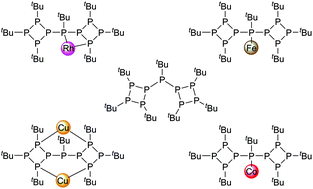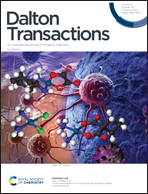Coordination chemistry of hepta-tert-butylnonaphosphane†
Abstract
Hepta-tert-butylnonaphosphane {cyclo-(P4tBu3)}2PtBu was employed as a ligand in transition metal complexes of iron(0) (1), cobalt(−I) (2), copper(I) (3) and rhodium(I) (4), which are readily formed in moderate to good yields, and an unstable palladium(II) complex (5). The ligand features three different bonding modes (one monodentate (compounds 1 and 2) and two bidentate (compounds 3–5) with formation of four- or six-membered chelate rings), as determined by X-ray diffraction studies. The 31P{1H} NMR spectral data of 1–3 have been determined by automated line-shape analysis.



 Please wait while we load your content...
Please wait while we load your content...